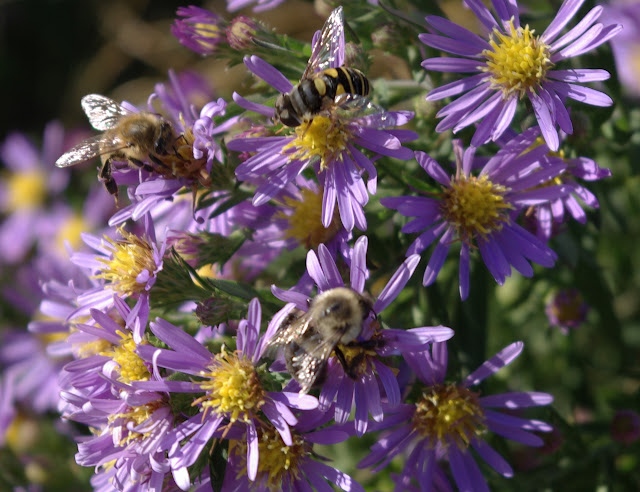The last couple of years I have baked Christmas cookies for the employees in my husband's office. I love to bake. Cooking unfortunately, not so much. I need different/ better equipment: a gas range, to start with. That's my excuse anyway.
One of my favorite recipes is Buttermilk Brownies. It's really much more like cake than brownies, and one of my favorite chocolate recipes.
2 cups all-purpose flour
2 cups sugar
1 tsp baking soda
1/4 tsp salt
1 cup butter
1/3 cup unsweetened cocoa powder
1 cup water
2 eggs
1/2 cup buttermilk
1 1/2 vanilla
optional: 3/4+ coarsely chopped pecans or walnuts can be added either to the brownie batter or frosting
1) Preheat oven to 350 degrees. Grease a 15 x 10 x 1 or 13 x 9 x 2 baking dish. Combine flour, sugar, baking soda and salt; set aside.
2) In a medium saucepan combine water, cocoa powder, and butter. Bring just to boiling, stirring constantly. Remove from heat and add chocolate mixture to flour mixture with an electric mixer until combined. Add eggs, buttermilk and vanilla (batter will be thin) and pour into pan.
3) Bake for 25 minutes for 15 x 10 x 1", 35 minutes for 13 x 9 x 2" pan, or until toothpick inserted in the center comes out clean.
Allow brownies to cool until just warm to the touch before pouring frosting over brownies. Warning: Work quickly when spreading the frosting because it starts setting almost immediately.
Chocolate-Buttermilk Frosting
In a medium saucepan combine 1/4 cup butter, 3 tablespoons cocoa powder and 3 tablespoons buttermilk. Bring mixture to a boil, then remove from heat. Beat in 2 1/4 cups powdered sugar and 1/2 tsp vanilla until smooth. You may need to add an additional tablespoon or 2 of buttermilk. Stir in nuts. Pour warm frosting over brownies.


















































